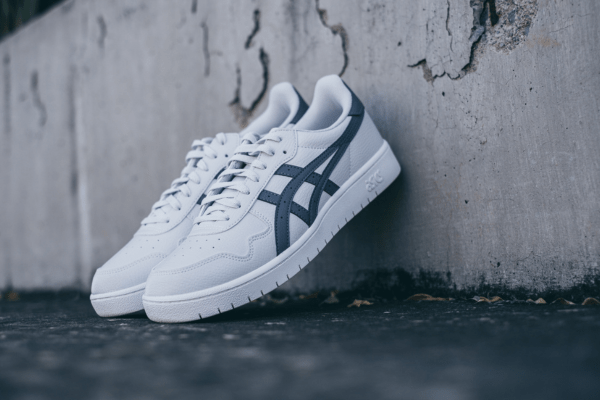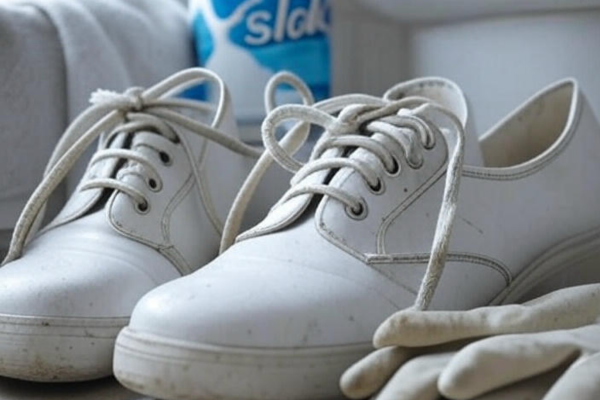1. Introduction
When you play sports, your shoes must fit your feet just right. Loose shoes may slide on your feet, leading to pain or blisters, while overly tight shoes can squeeze and cause discomfort or pressure marks. That’s why secure lacing for sports shoes is so important.
Using the right performance lacing techniques helps your shoes stay snug without being too tight. This gives you better balance, stops your foot from sliding, and helps you play safely. Whether you’re running, jumping, or kicking, good lacing helps you move better and stay comfortable.
2. Common Problems with Loose Lacing
When your sports shoes are not laced tightly, many problems can happen. Your shoes may slip off while you run or play, which can make you fall. Loose laces can also cause blisters on your feet. Blisters like these can be painful and may ruin your sports experience. Some people feel pain in their feet because the shoes are not giving enough support.
To stop these problems, secure lacing for sports shoes is very important. It helps your shoes stay in place, gives better support, and protects you from getting hurt. By learning how to lace shoes to avoid injury, you can feel more comfortable and play safely. It also helps in lacing to reduce foot pain and gives a firm grip, so your feet don’t move too much inside the shoes. If you want to stay safe and perform well, always use secure lacing to avoid blisters and keep your feet happy.

3. Lacing Tricks for a Locked-In Feel
If your shoes feel loose or slide while playing, you may need better lacing. Using the locked-in lacing technique helps your feet stay firm and safe inside the shoe.
One simple way to improve foot stability during sports is to pull the laces tight across the top and use a special loop at the end (called a runner’s loop). This helps stop your heel from moving up and down.
Here’s how to lace sports shoes securely:
- Start lacing as usual, from bottom to top.
- When you reach the last two eyelets, make small loops on each side.
- Cross the laces and pull them through the opposite loop.
- Pull tight and tie a knot.
This method gives you a locked-in feel and keeps your shoes snug, even during running, jumping, or fast moves. It also helps reduce pressure on the top of your foot and gives better support where you need it most.
By using these lacing tricks for a locked-in feel, your shoes won’t slip, and your feet will feel more secure and comfortable.

4. Top Secure Lacing Techniques (Step-by-Step)
Wearing sports shoes the right way isn’t just about size—it’s also about how you tie them. A secure lacing style helps keep your shoes tight, your feet safe, and your game strong!
Below are three of the best lacing methods for athletes. These will give you a tight fit, help stop your shoes from slipping, and even prevent blisters.
1. Lock Lacing Method
This method is great for runners and active sports players. It helps give you a tight grip on your heel and keeps your shoes from moving too much.
How to Do It:
- Lace your shoes the normal way until the second-to-last hole.
- Put each lace straight into the top hole on the same side. This creates a small loop.
- Cross the laces and thread each one into the loop on the other side.
- Pull tight and tie as usual.
Why Use It?
This is a perfect tight lacing for athletic shoes. It keeps your foot locked in, especially during fast movement.
2. Heel Lock Lacing
If your heel slips out when you run or jump, this method is for you.
How to Do It:
- Lace your shoes up like normal, leaving the top two holes.
- Make small loops using the top holes (just like in lock lacing).
- Cross and thread the laces into the opposite loop.
- Pull tight and tie.
Why Use It?
This style adds ankle support and helps with blister prevention in sports shoes, especially for long games or runs.
3. Runner’s Loop
A favorite among athletes, this method gives a tight fit and adds comfort for longer runs.
How to Do It:
- Lace up to the top eyelets.
- Make loops at the top just like in heel lock lacing.
- Thread each lace into the opposite loop and pull.
- Tie firmly.
Why Use It?
It’s a tight-fit lacing method for athletes that reduces movement inside the shoe and avoids rubbing—a great way to stay blister-free.
Final Tip
Each of these secure lacing methods helps:
- Give your foot a tight but comfy fit.
- Prevent blisters and heel pain
- Keep your shoes locked in place during sports.
Whether you play basketball, run track, or just want a better fit—try these easy lacing techniques. Your feet will thank you!

5. Sports-Specific Lacing Techniques (Easy & Effective)
Every sport is different. So are your lacing needs! Using the right lacing style helps your feet feel better, stay safer, and move faster. Let’s look at how to lace shoes for different sports.
a. Running
For running, your shoes should feel secure but not tight. Running shoe secure lacing helps your feet move naturally without slipping. Try performance lacing styles like the runner’s loop to get a good foot lockdown lacing. This gives you both shoe comfort and foot alignment, which is great for long runs.
b. Basketball
Basketball needs fast moves and strong support. Use a basketball shoe lacing method that locks your ankle and heel in place. This helps avoid injuries and improves stability lacing for athletes. Make sure the laces are tight around the ankle and not too loose in the toe area.
c. Soccer
In soccer, players need to kick, run, and stop quickly. Lacing styles for soccer shoes should avoid putting pressure on the top of your foot. Use sports-specific shoe lacing that gives a secure fit while letting your foot move freely. This keeps your shoes comfortable and balanced on the field.
Final Tip
Choose the lacing style that fits your sport. It helps improve your game and protects your feet. The right lacing gives you comfort, support, and strong performance in every step!

6. Lacing for Support, Comfort & Injury Prevention
Wearing sports shoes the right way can help your feet feel safe and strong. If your shoelaces are too loose, your foot can slip, twist, or even get hurt. That’s why secure lacing for sports shoes is very important, especially for running, jumping, and playing.
Why Proper Lacing Matters
When you tie your shoes the right way, you get a secure fit. This means your shoes stay in place and support your feet while you move. A secure-fitting shoelacehelps stop your heel from slipping and gives your ankle better support. It also helps reduce pain in your arch or toes.
How to Lace Shoes to Avoid Injury
Some people get hurt because their laces are too loose or too tight. You can try the secure fit shoelace technique, like the “heel lock” or “runner’s loop.” These styles keep your shoes firm without hurting your feet. They are easy to learn and make a big difference.
Comfort + Support = Better Movement
When your shoes fit well, you feel more comfortable. You can walk, run, and play longer without pain. A good lacing style also helps your body stay in the right posture, which means less pressure on your knees and back. This is how you start enhancing athletic performance through shoe fit.

7. Bonus Tips & Expert Recommendations
Lacing your sports shoes the right way is very important. It helps you run, jump, and play without your shoes slipping or hurting your feet. Here are some smart and easy tips to make sure your shoes fit well and feel good all day.
1. When Should You Re-Tie Your Shoes?
If your shoes feel loose during exercise or games, it’s time to stop and re-tie them. Loose laces can make you trip or slow you down. Re-tying your shoes keeps them tight and safe.
Tip: Always double-knot your laces to stop them from coming undone.
2. Choose the Right Type of Shoelaces
Not all laces are the same! The kind of laces you use changes how your shoes feel.
- Flat laces stay tighterthan round ones.
- Stretch laces are comfy, but firm laces give more support.
- For better grip, try anti-slip shoelace techniques or use special anti-slip laces.
This helps keep shoes from slipping and gives your foot a strong hold inside the shoe.
3. Best Lacing Style for Your Foot Shape
Everyone’s feet are different. Using the right lacing method helps shoes fit better and feel more comfortable.
- If your shoes press too hard, use loose lacing across the middle.
- If your heels slip out, try the heel lock lacing technique.
- For wide feet, skip some eyelets to give more room.
This is the best way to lace sports shoes for all foot shapes—simple changes can make a big difference!
Common Lacing Mistakes and How to Fix Them
Mistake 1: Tying too tight
Fix: Loosen the middle part so your foot doesn’t hurt.
Mistake 2: Laces always come undone.
Fix: Use a double knot or try the anti-slip shoelace technique.
Mistake 3: Wrong lacing pattern for your sport
Solution: Discover the correct way to lace your sports shoes for running, soccer, or basketball to improve fit and support.
Final Tip
Lacing may look simple, but doing it right makes a big difference in your comfort and performance. Try different styles, find what works for you, and never ignore loose laces!

8. Conclusion
Lacing your sports shoes the right way is very important. Secure lacing for sports shoes helps your shoes stay tight, so they don’t move or slip while you run or play. This keeps your feet safe and gives you better control.
Different sports may need different lacing methods. A runner, a football player, and a basketball player may all need different types of shoe-lacing techniques to feel comfortable and avoid injury.
Test different lacing methods to see which one gives your feet the most comfort and support. Use methods like the heel lock, runner’s loop, or other secure lacing tricks to get a better fit and stop foot pain or blisters.
Explore more expert tips and lacing guides on [bestshoelaces]. Find the best techniques for comfort, support, and performance. Perfect for athletes, runners, and anyone who wants a better shoe fit.
9. FAQ
1. What is the most secure way to lace running shoes?
Heel lock or runner’s loop methods offer the most secure way to tie your shoes. These stop your foot from slipping inside the shoe. They give you a snug, secure fit for better performance.Great for long runs and injury prevention.
2. Can lacing styles really affect athletic performance?
Yes, lacing styles affect comfort and movement. Proper lacing helps balance pressure and grip. It prevents foot pain, blisters, and loose shoes.Better lacing means better performance in sports.
3. What is the best way to lace your shoes for stronger ankle support?
Use the lock lacing or heel lock method. These keep your ankle tight and stable. They reduce the chance of your ankle turning or rolling while you’re active. Perfect for sports like basketball or running.
4. What’s the best lacing style to avoid foot pain or blisters?
Try bar lacing or straight lacing techniques. They reduce pressure and rubbing on your feet. This prevents pain, blisters, and hot spots.Comfortable lacing means safer, longer play.
5. Which lacing methods work best for different sports?
Running: Use a runner’s loop for heel lock.
Basketball: Try a heel lock for ankle support.
Soccer: Use a low-pressure, criss-cross style.
Each sport needs a different secure fit.


